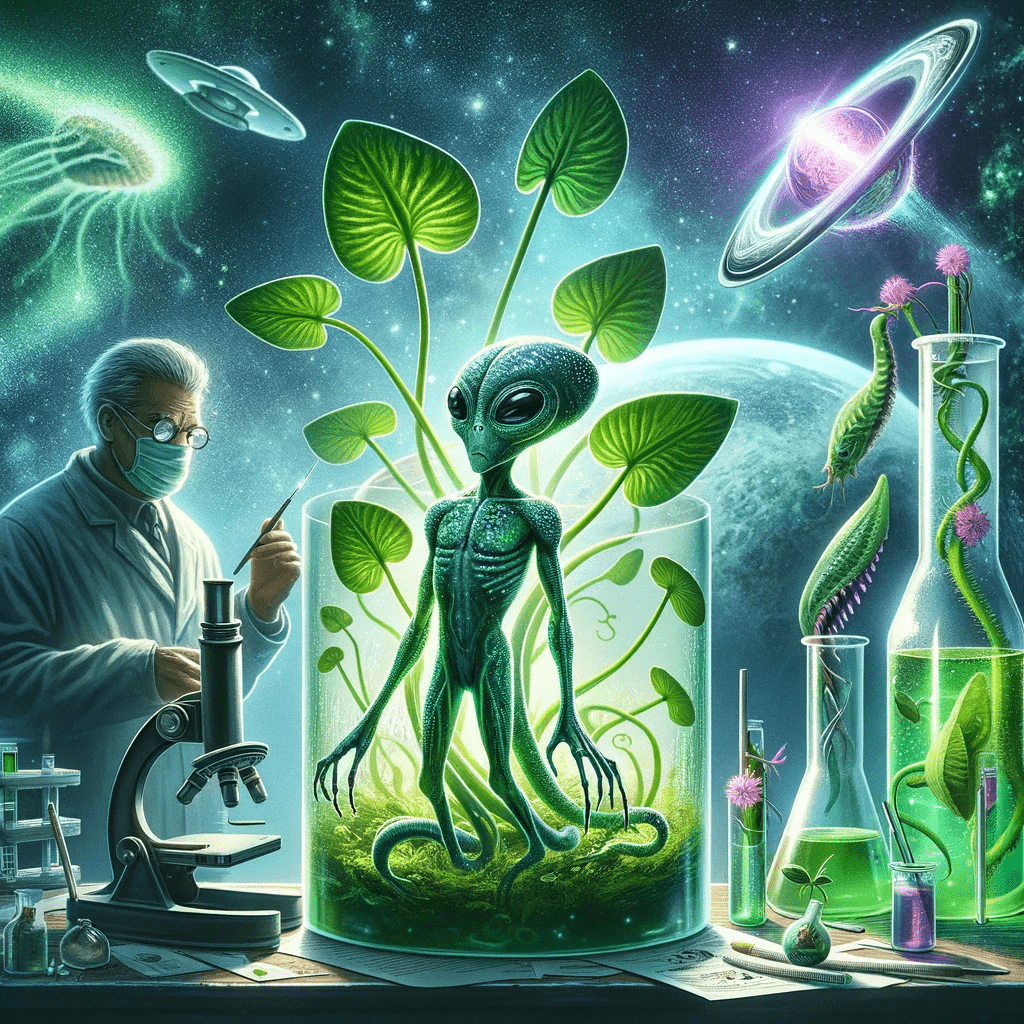Chlorophyll based and Plant like EBE

The Roswell crash of 1947 continues to captivate with a wealth of stories and speculations. At the heart of these accounts stands EBE—Extraterrestrial Biological Entity—a name suggested by Dr. Vannevar Bush, highlighting the blend of the unknown with a methodical scientific approach. This term underscores our relentless drive to make sense of what seems beyond our grasp.
The origins of the name EBE, which stands for Extraterrestrial Biological Entity are credited to a suggestion by Dr. Vannevar Bush, reflecting the scientific approach to the presence of an alien life form. Recovered from the infamous Roswell crash of 1947.
It took almost two years of captivity for EBE to warm up to the idea of more open communication. As trust was established, EBE began to share more liberally, contributing knowledge that would form the basis of what is known as the “Yellow Book,” a reported detailed account of the alien’s background and its civilization’s interactions with Earth.
Photographs were purportedly taken of EBE, capturing its otherworldly essence, and these images were said to have been viewed by select individuals, including the author and a person named Bill English, who claimed to have had access to a secretive report known as GRUDGE 13, which allegedly contained these photos among other information about UFOs and extraterrestrial encounters.
EBE’s time on Earth, however, was not to last. In 1951, EBE became ill, baffling the medical team with its unique physiology that mirrored a chlorophyll-based system, akin to that of plants. Traditional medical practices proved inadequate since EBE’s biological processes were alien to what medical experts were equipped to handle. Enter Dr. Guillermo Mendoza, a botanist whose expertise was sought in a desperate attempt to reverse EBE’s declining health. Dr. Mendoza’s efforts were ultimately unsuccessful, but his time with EBE granted him a profound understanding of alien biology, turning him into a leading figure in this esoteric field.
Chlorophyll is the pigment found in plants that facilitates the process of photosynthesis by absorbing light, typically sunlight. It is most commonly associated with plants, algae, and certain bacteria. However, there are some interesting examples in nature where chlorophyll or similar photosynthetic processes appear in animals:
- Elysia chlorotica (Eastern Emerald Elysia): This is a species of sea slug that can incorporate chloroplasts from the algae it eats into its own tissues, a process known as kleptoplasty. The chloroplasts continue to perform photosynthesis, which can provide energy to the slug.
- Spotted Salamander (Ambystoma maculatum): Algae have been found living inside the cells of the spotted salamander. The algae photosynthesize and provide energy to the salamander, while the animal provides the algae with a safe place to live.
- Coral: Some coral polyps host algae in their tissues, which perform photosynthesis and share the energy with their coral hosts.
These instances are examples of symbiotic relationships rather than the animal itself producing chlorophyll. The cases where animals use chlorophyll directly are rare and typically involve a symbiotic relationship where the animal benefits from the photosynthetic ability of its plant or algae partners. There’s no evidence that any Earthly animals have evolved a chlorophyll-based system independently like plants.
There is no public scientific evidence to suggest that natural organisms like plants or algae, which contain chlorophyll, possess or can develop artificial intelligence or advanced intelligence, as this would require them to create or integrate technological components that are entirely unnatural to their biology.
As the story unfolds around EBE’s mysterious illness, attended to by a botanist who became an accidental specialist in alien life forms, it reflects on our deep-seated links to the living world, from organisms that use chlorophyll to energy-sharing amphibians. The EBE accounts symbolize our inherent urge to seek knowledge, engage with the unknown, and establish a connection with the vast expanse of the universe.


